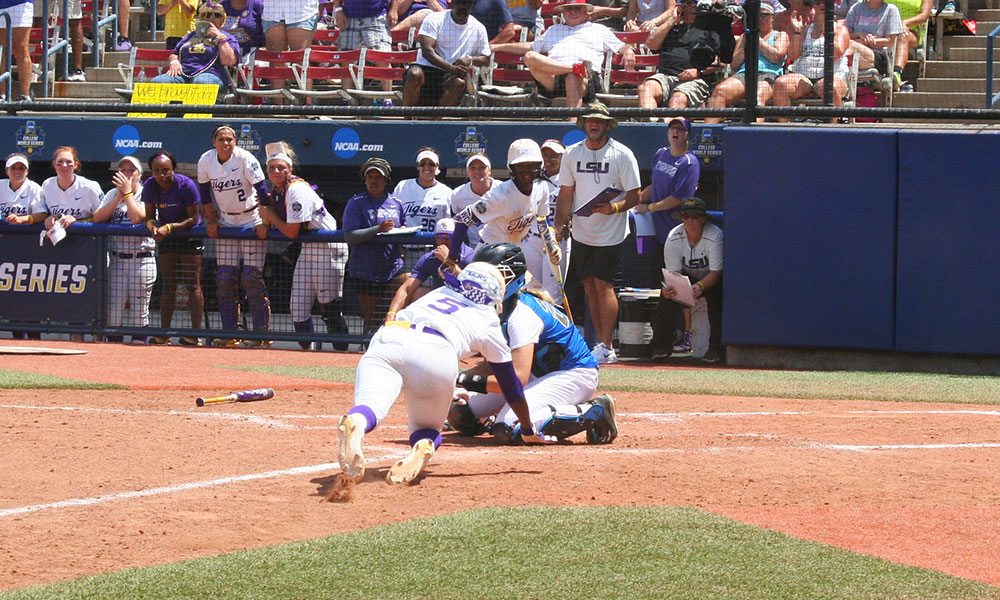Opinion: NCAA Softball 2017 The Good, Bad and Ugly, Part I

The Oklahoma Sooners and the Florida Gators gave us an instant classic in the 2017 championship series. The season ended on a high note and that is great for the fans and supporters. Game one brought in record viewership numbers and set records of its own going 17 innings. The presentation of the games was good and the coverage provided was great. We had players chasing records, coaches breaking records and great play all around the country. That was all good.
Softball is a rapidly growing sport. I am of the opinion that it will be the first female sport to become mainstream in the sports world. Meaning, it will be in a national conversation just like many of its male counterparts. That is a good thing. None of what is written here is about the players and or coaches specifically, it is about the frustration that comes with rules not being followed and or not called in a consistent way. I do not want to take away from all the hard work that the players and coaches put in. At the same time, it is important that we are able to have a conversation about not only what is good, but what needs to be fixed so that the sport does not lose legitimacy as it continues to grow.
For the bad and ugly it is hard to even pick a place to start. So, let’s start with the umpiring and the rules of the game. Call me old fashion, but if a rule is actually in the rule book, then it is the umpires’ job to enforce said rule. Some rules are vague, as is the case with obstruction, while others are clearly defined. An example would be, if a ball is on the outside of the foul line, it is considered a foul ball. But let’s look at a few rules that the umpires clearly do not agree with, since they decided to completely ignore them. It is hard to blame the player or the coaches. They will do what they do until they are told they cannot do it. It is like the speed limit, sure it says 55, but people will go faster until the police give them a ticket.
10.4.4.3: The pivot foot must remain in contact with the ground; however, rocking onto either the toe or heel is allowed. (2016 and 2017 NCAA Women’s Softball Rules)
10.4.5: Leaping is not allowed. The pitcher may not become airborne on the initial drive from the pitcher’s plate. The pivot foot must slide/drag on the ground.
10.4.6: Crow hopping is not allowed. The pitcher may not replant, gain a second starting point and push off her pivot foot. Once having lost contact with the pitcher’s plate, the pivot foot may trail on the ground but may not bear weight again until the pitch is released.
The above rules were not enforced on a consistent basis all season and at all levels. It appears that these rules are rather straightforward. Yet umpires were not calling it. The question is, why? What is the purpose of having a rule book and written rules? It is not as if Captain Barbossa from the Pirates of the Caribbean is umpiring games, “The code is more what you’d call ‘guidelines’ than actual rules.” Based on some of the calls this past season, maybe he would have done better a job.
The NCAA must address this. Either it remains a rule and the umpires call it, or take it out of the rule book. Seems to be a rather easy solution one way or another.
Besides the complete ignorance by the umpires on the rules above, the obstruction rule seemed to really have them baffled at the WCWS. In fairness, the issue may be more with the vagueness of the rule then it is with the umpires inability to consistently call it. Things boiled over when softball legend Lisa Fernandez (UCLA) was ejected after a call at home against Texas A&M. In this case, the obstruction was not called, yet in a previous game, UCLA was called for obstruction on a very similar play. I am of the opinion that neither were obstruction since the ball and catcher both beat the runner to the plate. Back to the rule itself.
1.36 Obstruction: The act of a defensive team member that hinders or impedes a batter’s attempt to make contact with a pitch or that impedes the progress of a runner who is legally running the bases, unless the fielder is in possession of the ball, is fielding a batted ball or is in the act of catching a thrown ball. The act may be intentional or unintentional and applies to live-ball action only.
It is almost mind numbing how many times at the WCWS this rule was a point of contention and utter confusion. This rule needs to be put under a microscope and addressed prior to the start of next season.
As stated earlier, the list of things under the “rules” is long and probably even longer if we spoke to some of the coaches. Some have called for instant replay, just like the men’s College World Series uses, while others just seemed frustrated with the lack of consistency. As a sport, the NCAA needs to review the existing rules, make appropriate changes and most of all, make umpires call the rules as they are actually written. Some rules are subjective and that is part of the game, but we cannot allow umpires to use subjectivity on rules that are not subjective.
Fans across the country have voiced their opinions and feel as if the playing field in not level. We will look more into that in Part II. The NCAA needs to strive to remain legitimate as an organization and addressing the rules is a good start. Tune in tomorrow for our thoughts on the NCAA.







